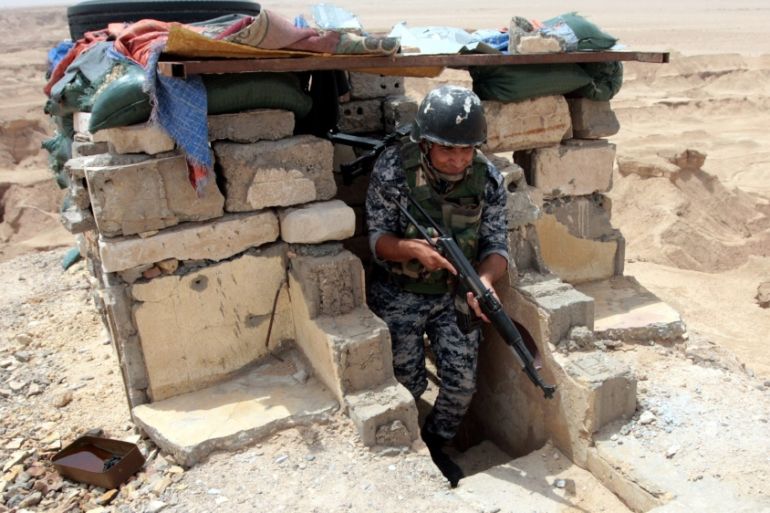Obama: No complete strategy yet on training Iraqis
President says forces without US assistance are often ill-equipped in fight against ISIL and suffer from poor morale.

Barack Obama has admitted that the US has no complete strategy for training Iraqi forces to fight the Islamic State of Iraq and the Levant (ISIL) group.
The US president made the comments after meeting the Iraqi Prime Minister Haider al-Abbadi on the sidelines of the G7 summit in Germany on Monday.
Keep reading
list of 4 itemsMoscow theatre attack suspects show signs of beating in court
Four men showing signs of severe beating charged over Moscow concert attack
Russia mourns Moscow concert hall attack victims as death toll rises to 137
ISIL has continued to gain ground in both Iraq and Syria, despite months of US-led air strikes and the US training thousands of Iraqi troops.
Obama touted “significant progress” in areas where the US has trained Iraqis to fight but said forces without US assistance are often ill-equipped and suffer from poor morale.
ISIL fighters captured the key Anbar provincial capital of Ramadi last month, prompting Defence Secretary Ash Carter to lament that Iraqi troops lacked “the will to fight”.
OPINION: A winning strategy for the anti-ISIL coalition
Obama said that the 3,000 US service personnel in Iraq sometimes find themselves with “more training capacity than we’ve got recruits”.
“We want to get more Iraqi security forces trained, fresh, well-equipped and focused and Abbadi wants the same thing so we’re reviewing a range of plans for how we might do that,” Obama said.
“We don’t have, yet, a complete strategy, because it requires commitments on the part of Iraqis as well about how recruitment takes place, how that training takes place.”
Sunni support
The Iraqi military has been the beneficiary of billions in US assistance dating back to the war started during the administration of US President George W Bush in 2003.
G7 leaders invited Abbadi to join them on Monday for talks on the security situation in the Middle East. Obama and Abbadi also met one-on-one shortly before the president departed for Washington.
|
|
Obama urged the prime minister and his Shia-led government to allow more Sunnis to fight ISIL. The White House has long blamed Iraq’s sectarian divisions for stoking the kind of instability that allowed the group to thrive.
“We’ve seen Sunni tribes who are not only willing and prepared to fight ISIL, but have been successful at rebuffing ISIL,” Obama said. “But it has not been happening as fast as it needs to.”
An early opponent of Bush’s war in Iraq, Obama withdrew US forces in late 2011 and has vowed that he will not send Americans back into combat there. The US, along with coalition partners, is launching air strikes in both Iraq and Syria, but is banking on local ground forces to supplement that effort.
A six-week US combat training course instructs Iraqi forces in how to shoot, communicate and move about on the battlefield. They are also given individual military equipment.
As of June 4, the US had trained 8,920 Iraqi troops at four sites, and 2,601 more are undergoing training, according to Pentagon spokesman Colonel Steve Warren.
Beyond Iraq’s sectarian divisions, senior defence officials told the AP news agency, training is hindered because Iraqi security forces have difficulty getting to training sites. Not only are they consumed with fighting, but there are also risks in the travel itself, from ISIL fighters to roadside bombs and blocked roads.